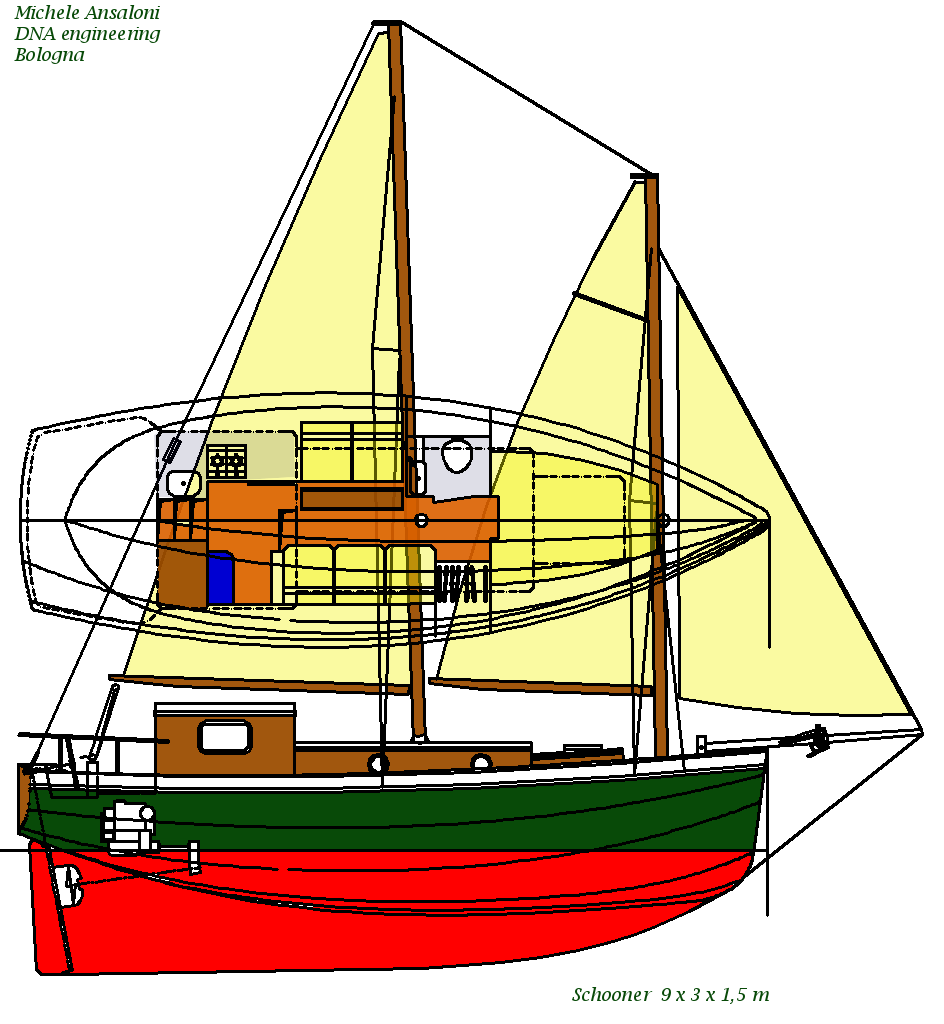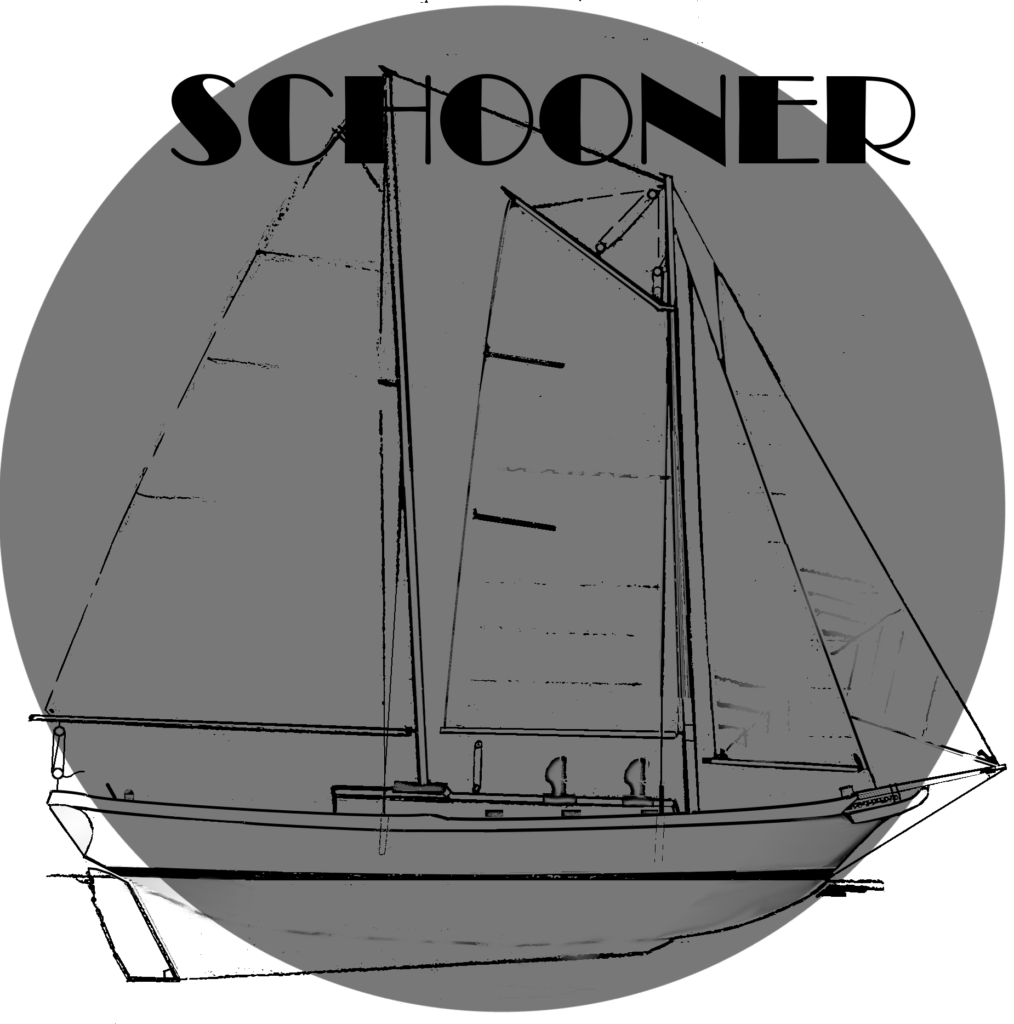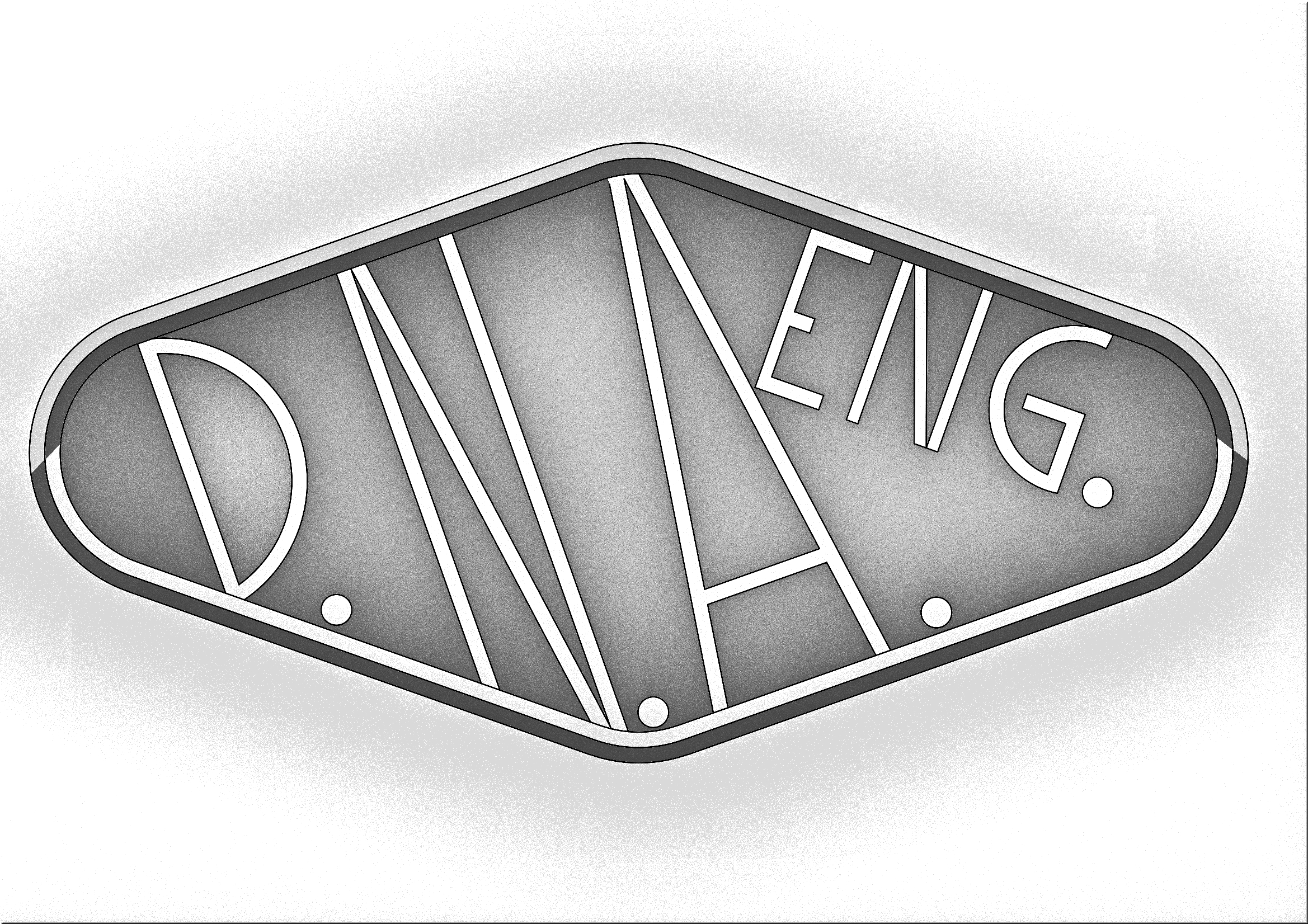English text Link to English text
Shooner e Catboat sono pietre di paragone per ogni nuovo progetto. Noi andiamo a vela per divertirci e possiamo sempre contare sul motore ma non è sempre stato così. Anzi fino al 1807,varo del primo piroscafo, la vela non aveva altri concorrenti che remi e schiavi. .
I viaggi per mare, per la esplorazione e la pesca erano invece molto fiorenti. quindi non c’era marinaio o pescatore che non fosse velista e si può stare certi che sapevano andare per mare e conoscevano “istintivamente” le barche compresi gli Shooner e Catboat.
Certo il metodo scientifico non era così diffuso come adesso, ma attraverso un processo di “sbaglia e impara” erano stati selezionati i tipi di barche più adatti ai diversi mestieri e condizioni d’uso. La tradizione americana dal 1851, data della prima coppa America, incominciò a scalzare il predominio inglese e in essa due tipi emergono in modo chiaro: Shooner e Catboat
.
Talvolta si è portati ad individuare con Shooner e Catboat solo gli armi velici, ma più propriamente bisogna fare riferimento anche agli scafi. Il catboat è una barca molto larga, https://www.micheleansaloni.it/catboat/ ) potente e leggera è ideale per le acque protette. Lo shooner abbastanza stretto, profondo e pesante è fatto per l’altomare. Non equivochiamo i catboat erano piatti, ma non come le barche di oggi , mentre gli shooner erano stretti e profondi, ma mai come uno yacht inglese della stessa epoca.
C’è un motivo scientifico per queste due forme ed è molto semplice. Se tagliamo la barca al galleggiamento avremo la figura di galleggiamento che, come tutte le figure piane, ha un area. Dividessimo il dislocamento ( peso della barca carica) per i metri quadri dell’area della figura di galleggiamento otterremmo un peso per metro quadrato cioè una pressione. La barca che ha minor pressione è la più “ballerina”, quella cioè il cui equipaggio sentirà di più il mare.
Sempre per citare il passato i catboat più cattivi da regata si chiamavano sandbagger perchè la zavorra, formata da sacchi di sabbia, veniva spostata dai marinai prima sopravvento poi buttata a mare nell’ultimo lato di poppa, questo procedimento è la riprova che la barca larga non ha bisogno di molta zavorra e, piuttosto che abbassare il baricentro è meglio spostarlo sopravvento. Il contrario si può dire per lo schooner che può navigare molto sbandato con il mare in coperta perchè ha una buona percentuale di zavorra, non a caso una delle barche più comode con qualsiasi mare è stata lo shooner “Seawanaca” di 18 metri progettato dal famoso studio Cox & Stevens nel 1925 e prodotto (benchè n legno) in 16 esemplari dal cantiere Bath Iron Works nel Maine (U.S.A.)Walter Barnum ha incaricato Sparkman & Stephens di progettare “Brilliant” con quello che l’azienda considerava un “brief di progettazione notoriamente rigoroso”. Lo yacht doveva essere in grado di ribaltarsi durante un uragano e raddrizzarsi con i boccaporti intatti ; stare alla cappa in una tempesta ; avere un timone e una macchina di governo “ indistruttibili”; avere alberi bassi in grado di resistere alle sollecitazioni che si verificano in un ribaltamento completo; avere più (e migliori) dispositivi di fissaggio rispetto al massimo normalmente utilizzato; e altro ancora. Brilliant doveva anche essere costruito con materiali “letteralmente perfetti per l’uso previsto” e per essere veloce, resistente alle intemperie e bello. Sparkman & Stephens sono riusciti a ottenere tutto questo e molto altro, a un costo di costruzione di $ 100.000.
Anche i due armi velici sono conseguenti: il catboat è così largo che non ha paura della grande randa che la sovrasta mentre lo shooner proporzionalmente più stretto ha addirittura due alberi, che è il mezzo migliore per abbassare il centro velico e portare molta tela con vento forte.
Questi due archetipi mi hanno sempre aiutato nella progettazione ed è contro di loro che faccio “correre” qualsiasi lepre. Certo oggi le barche a vela plananti corrono in mare aperto a velocità strabilianti, ma i loro equipaggi mi ricordano un poco i vichinghi, che con lo scudo e l’elmo con le corna, attraversavano lo stretto di Danimarca su barche aperte e senza zavorra. Bel fegato!I miei ragionamenti invece sono per chi pensa che in mare si possa stare un poco più comodi.
English text
Shooners and Catboats are milestones for every new project
We go sailing to have fun and we can always rely on the engine power, but it hasn’t always been this way.
Indeed until 1807, launch of the first steamer, the sail had no other competitors than oars and slaves.
Sea voyages, exploration and fishing, on the other hand, were very flourishing. so there was no sailor or fisherman who was not a sailor and you can be sure that they knew how to go to sea and knew the boats.
Of course, the scientific method was not as widespread as it is now, but through a process of making mistakes and learning, the most suitable types were selected for the purpose.
In the American tradition, that from 1851 began to undermine the English dominance, two types clearly emerge: the cat and the shooner.
Sometimes we are led to identify with cat and shooner only a rig type , but more properly we must also refer to the hulls.
The catboat is a very wide, powerful and light, a boat t ideal for protected waters. The fairly narrow, deep and heavy shooner is made for the offshore work. Let’s not mistake: the catboats were flat, but not like today’s boats, while the shooners were narrow and deep, but never like an English yacht of the same era.
There is a scientific reason for these two forms and it is very simple. If we cut the boat on the waterline we will have the floating figure which like all flat figures has an area, if we divide the displacement (weight of the loaded boat) by the square meters of the area of the floating figure we get a weight per square meter, now It is very simple to understand that the boat that has the lowest weight per square meter is the most “ballerina”, that is, the one whose crew will feel the sea and the seasickness more.
Again to mention the past, the worst catboat racers were called “sandbaggers” because the ballast, made up of sandbags, was moved upwind by the sailors and finally thrown overboard on the last downwind leg, it is proof that the wide boat does not need with a lot of ballast and, rather than lowering the center of gravity, it is better to move it upwind. The opposite can be said for the schooner that can sail very heeled with the sea on deck because it has a good percentage of ballast, not surprisingly one of the most comfortable boats with any sea was the 18-meter “Seawanaca” shooner designed by the famous Cox & Stevens office in 1925 and produced (albeit in wood) in 16 copies from the Bath Iron Works yard in Maine (USA).
Walter Barnum commissioned Sparkman & Stephens to design Brilliant with what the firm considered a “notoriously rigorous design brief.” The yacht had to be able to roll over in a hurricane and come up with her deck-opening covers intact; lie steadily in a full gale; have a “nearly unbreakable” rudder and steering gear; have lower masts able to withstand strain approaching a complete capsize; have more (and better) fasteners than the maximum usually used; and more. Brilliant also was supposed to be built with materials that were “literally perfect for the use intended,” and to be fast, weatherly and handsome. Sparkman & Stephens managed to achieve all of that and more, at a construction cost of $100,000.
The two sailing rigs are also consequent: the catboat is so wide that it is not afraid of the large mainsail that hangs over her while the proportionally narrower shooner has two masts, which is the best way to lower the sail center and bring a lot of cloth when the wind blows hard.
These two archetypes have always helped me in the design of sailing yachs and it is against them that I make any “rabbit” to run.
Of course today planing sailboats race in the open sea at amazing speeds, but their crews remind me a little of the Vikings, who with their shields and helm with horns, crossed the Strait of Denmark on open boats without ballast. Guts people indeed!
My reasoning is for those who think that it is possible to be a little more comfortable cruising the open sea
Catboat “solo randa”




Una risposta su “SHOONER AND CATBOAT MILESTONES OF EVERY NEW PROJECT”
[…] SHOONER AND CATBOAT […]